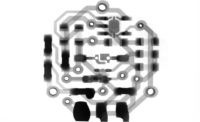The company I work for recently completed a project for a local community college customer, and this project had a more involved integration scope than is typical for us, so there were some lessons learned. I’m committing some of those lessons to this article, in hopes they can be helpful to others. The scope included the following systems:
- One main electrical power meter;
- Eleven electrical submeters;
- Three automatic transfer switches;
- One emergency generator;
- One uninterruptible power supply (UPS);
- Two domestic water heat exchangers;
- Three lighting panels (one per floor); and
- Three fan filter units (clean room application).
Construction management professionals will often separate construction project issues related to integration into their own class of tracking, because they can require so much coordination between trades.
Lesson 1: Integration Is 90% Homework
Integration provides a valuable resource to building owners in the observability of their various building systems, but the means by which it’s accomplished can vary widely between different equipment manufacturers. For that reason, a comprehensive product manual for the equipment you are integrating is a must-have as well as contact information for technical support teams. Here is a list of things we found out by conducting thorough research and talking with technical support for the different equipment:
- The main power meter features a net energy export value in kWh, but it comes in the form of four separate numeric values that must be manipulated into a much larger number. This is a topic that begins to venture into computer science territory.
- The wiring terminations for serial communications on the automatic transfer switches are not documented in the product manuals nor are they marked. Only a phone call to technical support revealed this, and we wanted this information in hand prior to a building shutdown, which was necessary to make the terminations.
- The UPS had a network communication card whose address could only be assigned through the use of a specific USB cable, some software drivers, and an undocumented password for onboard webpages. Again, only a call to technical support delivers this information.
- Every single numeric value that was integrated from the emergency generator required some sort of rescaling and/or engineering unit conversion. This information is not in a primary product manual, and we needed to request a Modbus register map.
- The domestic water heat exchangers were originally installed without a communication card option installed. It took reading an obscure product manual that documented model number conventions and a phone conversation with the vendor’s salesperson to arrive at this conclusion. Once the vendor’s technician completed a site visit, the communication card was installed, and the integration was up and running.
Lesson 2: Be There When the Equipment Vendor Is There
It is common that the equipment installed on-site is not 100% ready for integration until an equipment vendor’s technician visits the site. In a perfect world, this technician can follow a few step-by-step instructions while the integrator/controls contractor is off-site and then the integration can be completed at a later date. However, there are several factors that prevent this from working well, and here are just a few:
- Network coordination: The vendor’s technician often needs to apply network addressing that will coalesce with other equipment on the same network, furnished by others.
- Site-specific requirements: In the case of lighting controls, in particular, the configuration and available data for integration are often completely custom for the project, and so it’s best for both parties to be on-site at the same time. A lighting control system might entail hundreds of fixtures that need to be put into logical groupings, both for the purposes of normal control and for integration.
- Tweaks: In the case of this particular project, we ended up needing to have the emergency generator vendor’s technician disable an alarm function on the generator that would trigger the fire alarm system whenever there was “network noise” on the serial network we were using to monitor the generator. The generator was at the very end of a serial communication network with almost 10 other devices, and this network included other electrical power systems equipment, so network noise was unavoidable. Only that technician had the tools necessary to disable that alarm function, and there would have been lots of warranty issues throughout the life of the building if the change was not made.
Some products are designed and procured in a way where it can take a long time before the vendor’s technician can be scheduled on-site. I’ve personally found this to be very common for lighting control products, and the importance is amplified when integration work is involved.
Lesson 3: Figure Out Who’s on First
That subhead is a bit cryptic, but what I mean to point out is that it’s important to figure out exactly how things will work with respect to day-to-day adjustments. For example, if the lighting system allows for operating zones remotely, is that a good idea? Can a local wall station be used to change the light levels at that point, or does remote control render wall stations ineffective? In many cases, integrations only accomplish monitoring rather than control (e.g., energy meters), but you still must settle these questions when they include control. For example, in the case of the domestic water heat exchangers, it was in our scope to disable the recirculation pumps whenever the building was unoccupied. Based on a discussion with the product vendor, it was suggested to disable the heat exchangers at the same time. The integration did not afford us direct control of the mixing control valves, so we arrived at resetting the operating set point to a low value during occupied times (e.g., around 70°F instead of around 120°).
Lesson 4: Remember What the Customer Really Wants
It can be really easy to be so caught up in the requirements, specifications, manuals, and drawings that you lose track of what the customer really wants. You should be sure to always keep in mind the purpose behind the important work you’re doing. For example, the reason for monitoring an emergency generator over integration is often condition-based maintenance of the fuel and proving it’s being exercised regularly. The reason for monitoring a UPS is often to catch early signs of battery failure (such as increased battery temperature). As you bear these things in mind, remember that, once communications have been established and information is flowing, your work isn’t quite done. You have an opportunity to make sure the subjective aspects of your work are having a positive impact for your customers.





